|
Low-level laser therapy is fast becoming a heavy player in the veterinary and animal physiotherapy world as an alternative or complementary treatment. Nowadays, dog owners are searching for the best treatment available to enhance their dogs' quality of life, and low-level laser therapy is a great option. It's a non-invasive, painless approach to pain treatment that helps support the healing process. Let's explore the uses and benefits of LLLT for our dogs in need What Is LLLT? Low-Level Laser Therapy, also known as cold laser, is a medical treatment that uses low-intensity lasers or light emitting diodes (LEDs) to stimulate healing and reduce pain at the cellular level. Unlike surgical lasers that use heat to cut or burn tissue, LLLT uses near infrared light to target specific areas of the body without damaging surrounding tissue. How Does LLLT Work for Dogs? LLLT (Low-Level Laser Therapy) operates on a cellular level. The photons of light it emits are directed towards the mitochondria of the cells, which are the energy powerhouses responsible for producing cellular energy. In simple terms, LLLT is similar to the way plants use UV light to photosynthesize and create energy for themselves. This interaction enhances cellular function, leading to a range of therapeutic benefits for dogs. LLLT Benefits:
Interesting Facts and Research Findings
Low-Level Laser Therapy is an effective treatment option that holds great promise in the field of canine physiotherapy. As a non-invasive, painless, and scientifically validated approach to pain management, inflammation reduction, and tissue regeneration, LLLT has the potential to improve the lives of our canine companions significantly. *Always consult with a qualified canine physiotherapist or veterinarian before starting any treatment, including LLLT, for your dog. They can provide personalised recommendations and ensure that LLLT is used safely and effectively to address your dog's specific needs. Barale, L., Monticelli, P., & Adami, C. (2023). Effects of low‐level laser therapy on impaired mobility in dogs with naturally occurring osteoarthritis. Veterinary Medicine and Science, 9(2), 653–659. https://doi.org/10.1002/vms3.997 Gait analysis plays a vital role in canine rehabilitation, aiding veterinarians and canine rehabilitation specialists in understanding and treating various musculoskeletal conditions and injuries in dogs. By closely observing a dog's gait, experts can identify abnormalities and make informed decisions to develop effective treatment plans. In this blog post, we will explore the different forms of gait analysis in canine rehabilitation and look at the usability of each. 1. Visual Gait Assessment Visual gait assessment is the most common and basic form of gait analysis and is what I use the most. It involves observing a dog's movement visually to detect any abnormalities, asymmetries, or irregularities in their gait. I also tend to video all my dogs within the initial assessment so that I can go back later and slow the video down in case I have missed a small discrepancy. While this method is quick and easy to perform and requires little in the way of equipment, there is mixed evidence of the reliability of the data picked up by the therapist. A study by Evans and colleagues compared visual observation of gait to force plate analysis and evaluated 148 Labrador retrievers—131 that were 6 months post surgery for unilateral cranial cruciate ligament injury and 17 that were free of orthopaedic disease. The observer only identified 11% of the 131 dogs that were 6 months post surgery as being abnormal compared with force plate analysis, which revealed that 75% of the 131 dogs failed to achieve ground reaction forces consistent with sound Labrador retrievers. While force plate analysis is superior to visual observation, visual observation is still a practical tool in clinical practice, and its importance should not be discounted. 2. Pressure Mat Analysis; Kinetic movement
Pressure mat analysis involves the use of specialised mats equipped with sensors that measure the distribution of pressure and force exerted by a dog's paws during movement or at a stationary stance. This technique offers a quantitative assessment of gait parameters, providing detailed insights into weight distribution and symmetry. Pressure mat measurements have been the most widely used and validated quantitative gait application in veterinary medicine to date and are considered the 'gold standard' in gait analysis. However, there are disadvantages to force plate analysis. Limitations include the need for a long dedicated walkway, multiple trials, difficulty in setting up, breaking down, and moving, the complexity of software and data analysis and cost and impracticality for clinical practice. 3. Kinematic Gait Analysis Kinematic gait analysis involves utilising motion capture technology to record a dog's movements in three-dimensional space. Reflective markers placed on key anatomical landmarks allow for precise measurement of joint angles and movement patterns during gait. Even though this is a great way to measure the acceleration and velocity of body segments, it still has its disadvantages. This system is costly to set up along with user accuracy when placing the markers and there can be extra movement that is picked up of the markers on the dog's skin. Kinematic analysis also doesn't give reason to 'causes of movement dysfunction' unlike EMG as it only describes motion. 4. Electromyography (EMG) Electromyography involves measuring the electrical activity of muscles during gait. By analysing the timing and magnitude of muscle activation, researchers gain insights into muscle function and identify potential imbalances or weaknesses, particularly in the neurological dog. Gait analysis is a critical component of canine rehabilitation, enabling veterinarians and rehab therapists to evaluate the effectiveness of treatment plans and monitor a dog's progress. While visual gait assessment remains a fundamental tool, advancements in technology have introduced more sophisticated techniques like pressure mat analysis, kinematic gait analysis, and electromyography. Each approach contributes unique insights into a dog's gait, allowing for tailored rehabilitation strategies. Evans R, Horstman C, Conzemius M. Accuracy and optimization of force platform gait analysis in Labradors with cranial cruciate disease evaluated at a walking gait. Vet Surg 2005; 34(5):445-449. Gordon-Evans WJ. Gait analysis. In Tobias KM, Johnston SA (eds): Veterinary Surgery: Small Animal. St. Louis: Elsevier, 2012, pp 1190-1196. The bond between dogs and humans is growing stronger and more significant, leading to increased dedication by dog owners to provide the best possible care for their pets. Canine rehabilitation is becoming increasingly popular with dog owners as it provides a source of hope and healing for dogs dealing with various health conditions. In this blog post, we will examine some of the most commonly used tools in canine rehabilitation that I recommend. 1. Underwater Treadmills Underwater treadmills are one of the most effective tools in canine rehabilitation and are one of the reasons I chose to move away from a mobile business to a brick-and-mortar business. This technology allows dogs to exercise without bearing their full weight, reducing strain on their joints and muscles. The underwater treadmill therapy improves muscle strength and joint flexibility in dogs recovering from orthopaedic injuries and surgeries. I also love it as it is a functional movement and the buoyancy of water provides low-impact resistance, making it easier for canines to regain strength and mobility and is a firm favourite in my practice. 2. Therapeutic Ultrasound Therapeutic ultrasound is another modality that can be found in canine rehabilitation practice. This non-invasive treatment utilises high-frequency sound waves to promote tissue healing and helps with inflammation. I particularly use it on conditions such as ligament and tendon injuries or pathologies. 3. Balance and Stability Equipment Balance and stability equipment plays a vital role in enhancing a dog's core strength and proprioception. When it comes to balance equipment, there is a plethora to choose from! My go-to's are the inclined wedge, peanut stability ball and a dura disc. Stability balls and balance boards are great as they help dogs improve their balance and coordination, especially after neurological injuries. These tools challenge the dog's body to maintain stability, thereby strengthening muscles and improving overall stability. 4. Laser Therapy
Laser therapy, also known as photobiomodulation or LLLT has gained popularity in canine rehabilitation due to its ability to alleviate pain and promote tissue repair. Laser therapy has also been shown to reduce pain and improve joint mobility in dogs with arthritis. The application of low-level laser light stimulates cellular activity, leading to accelerated healing and reduced inflammation. Out of any modality in my clinic, the laser is my most favourite. It is non-invasive and non-painful to administer. It also doesn't require a gel (unlike the ultrasound machine) to use it. 5. Therapeutic Massage Therapeutic massage has long been recognised as a beneficial treatment for both humans and animals. Massage therapy can reduce muscle tension and improve the flexibility of tissues, particularly with dogs that have musculoskeletal conditions. Skilled massage techniques help increase circulation, reduce scar tissue, and enhance the release of endorphins, all of which contribute to the dog's overall well-being. 6. Assisted Rehabilitation Devices Assisted rehabilitation devices, such as harnesses and slings, are instrumental in supporting dogs during the recovery process. There are several ones to choose from however the one I reach for the most would have to be the help 'em up harness. This harness is adjustable in all aspects, has a front and rear fit (which can be detached if needed) and has strong steady handles to help assist any dog in need of a helping hand. I find that in practice, dogs that need the help em up harnesses regain their confidence and function faster than those that don't. The proper use of harnesses and slings assists dogs in walking and exercising, preventing further injury while building strength. The field of canine rehabilitation has made great strides in improving the quality of life for dogs. The most effective tools that I use in practice include underwater treadmills, therapeutic ultrasound, balance and stability equipment, laser therapy, therapeutic massage, and assisted rehabilitation devices. By utilising the latest tools and techniques in canine rehabilitation, rehab therapists can help dogs lead a healthier and happier life. Staying informed about the latest research and advancements in this field is essential to providing the best care possible for our dogs, enriching their lives and ours A dog's muscle mass plays a significant role in its health and physical abilities. To ensure proper monitoring of strength and detect any muscular abnormalities, objective assessment of muscle mass is crucial, particularly if you are a physiotherapist or rehab therapist. While various methods are available, the most prevalent way to measure muscle mass in dogs is through the thigh circumference using a tape measure. Physiotherapists and rehabilitation therapists often take note of this measurement to establish a baseline before implementing a strength and conditioning program. They will then re-evaluate the measurement at a later date to determine if there are satisfactory improvements in muscle mass and strength. How reliable is this measurement and what factors can influence the readings between people and between repeat measurements?References:
Bascuñán, A. L., Kieves, N., Goh, C., Hart, J., Regier, P., Rao, S., Foster, S., Palmer, R., & Duerr, F. M. (2016, May 5). Evaluation of Factors Influencing Thigh Circumference Measurement in Dogs. Journal Name, 1st published, 2016-05-05 Smith, T. J., Baltzer, W. I., Jelinski, S. E., & Salinardi, B. J. (2015). Inter- and Intratester Reliability of Anthropometric Assessment of Limb Circumference in Labrador Retrievers. Journal Name, 1st published, 08 October 2015 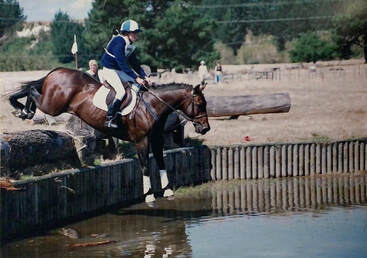 My horse Riki My horse Riki At a young age, I was besotted with animals big and small. Every Christmas or birthday became an opportunity for me to try and bribe my parents for yet another pet. I was crazy about horses and dogs and spent every second of every day obsessing over them. My thoroughbred, Riki, was my life. Every weekend was spent waking up at the crack of dawn and traipsing all over NZ to compete in events. He had the sweetest nature and tried his best at every event we went to. It was when I was 16 that I noticed something wasn't right. Riki started bucking me off when I turned him out for a few weeks, he also threatened to buck me off if I rode him down hill and he looked like he was struggling to stretch forward to urinate. I told my parents and after months of searching for the right answers my parents finally sourced two locals from Rotorua (who had a gift that was passed down through the family line) who said they could help Riki. I was skeptical but I was willing to try anything and everything to help him. When they came and assessed him, they told me his lower back was 'out' and proceeded to grab Riki's hind leg and rotate it quickly out to the side which let out a huge crack. I was mortified, but then the most amazing thing happened. Riki hung his head low, then proceeded to stretch out and for the first time in months, urinated without breaking stream and without effort. He rode perfectly for months after that and never bucked me off ever again!! As fate would have it, 1 year later I also injured my own lower back which stopped me from riding for three months. I was desperate to get back on Riki again and a friendly physio helped me rehabilitate my back so that I could ride once again. It was then that this strange concept started in my mind. I somehow knew that I wanted to help animals, and I wanted to provide the same treatment to them that was given to me and my back. Back then, there was no course that was available to me in NZ to merge what I wanted to do so I went on to complete my Bachelor of Physiotherapy at Otago University in 2007 and moved to Australia in the hopes to bridge the gap between human and animal physiotherapy. With the development of further courses that became available to me in Melbourne, I was finally able to further my education and career and I successfully completed my dream and opened Canine Kinetics in 2019. First as a mobile business, and then as a clinic offering canine hydrotherapy as well. 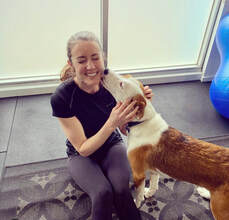 I wish I could somehow find those two men that helped Riki all those years ago and thank them for putting me on a pathway from which I have never looked back. Being able to help dogs and assist and educate their owners is incredibly rewarding and I'm so happy to work in an industry that is continually evolving AuthorJoanna Whitehead ; Physiotherapist, Canine Physiotherapist & Hydrotherapist |
AuthorJoanna Whitehead Archives
June 2024
Categories
All
|

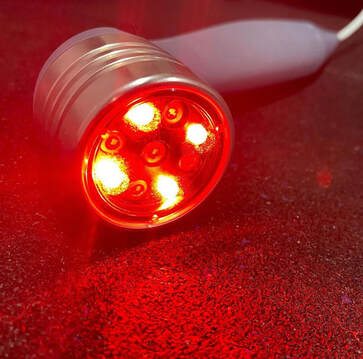
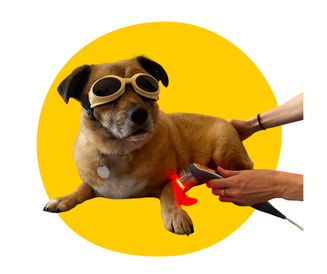
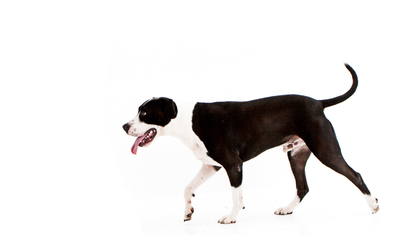
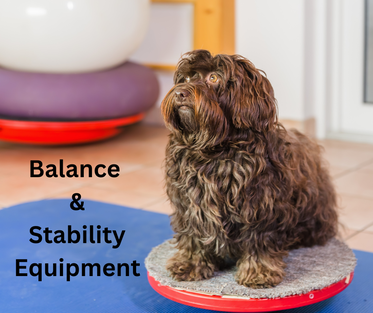
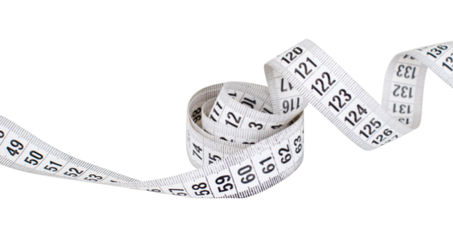
 RSS Feed
RSS Feed
